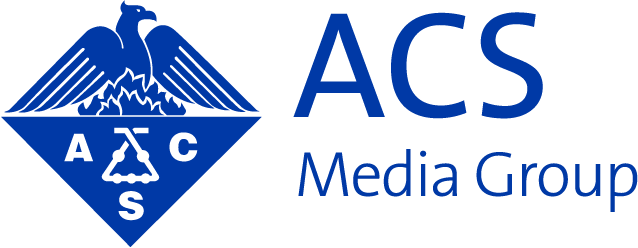The growing popularity of branded content—in both print and digital formats—has spawned an industry-wide debate about whether readers can tell the difference between conventional content and paid content.
During the past few years, commentators from TV host John Oliver to advertising critic Bob Garfield have decried the growth of branded content. On the other hand, publishers have seen it as a welcomed new tool for their advertisers to create more meaningful content, addressing advertisers’ growing pleas for innovation. Publishing companies from The New York Times to New York magazine have created in-house content marketing studios to do just that. And while many of these studios have maintained the customary church and state division between editorial and advertising teams, others, such as Conde Nast and Mental Floss, have charged their editorial staffs directly with creating advertorial content. Mental Floss’ philosophy being that a publisher shouldn’t create a “B team” for advertisers, and that this approach ensures editorial standards should be the same across the board.
This growth and differing opinion has resulted in the release of guidelines by the Federal Trade Commission for advertisers and publishers.
What the FTC Has to Say
Having watched this trend, the FTC issued guidelines in December 2015 for advertisers and publishers to follow if they are to publish branded content and not run afoul of the agency. For the most part, these guidelines simply codify what was already common practice. What’s different is that by issuing the guidelines, the FTC has added teeth: it’s putting not only the advertisers, but now also the publishers that carry branded content, on notice that violations will be dealt with.
This approach has a long history – it’s not new and scary.
Because the Federal Trade Commission Act prohibits practices that it considers deceptive or unfair, the updated guidelines are focused primarily on transparency, in order to make it crystal clear to readers that branded content is just that: branded—placed by advertisers, paid for by advertisers, and published with the intent to sell a product or service. As was stated in a post a few years ago on this very blog, the goal for everyone involved is not to trick the readers. Now through these specific guidelines, the FTC says it is addressing “the potential for consumers to be deceived by various categories of advertising formats, such as ads appearing in a news or feature story format, deceptive endorsements, undisclosed sponsorship of advertising or promotional messages, and ads in search results.” The FTC’s concern is that “regardless of the medium in which an advertising or promotional message is disseminated,” be it a print advertorial, a digital native ad, a video infomercial, or any other form of sponsored content, “deception occurs when consumers…are misled about its nature or source, and such misleading impression is likely to affect their decisions or conduct regarding the advertised product or the advertising.”
What should advertisers understand about this?
Labeling is key.
For the most part, these guidelines can be followed through the use of clear, prominent, and unambiguous labeling. This approach has a long history – it’s not new and scary. Back in 1967, the FTC suggested that print advertorials place the word advertisement in “clear type, sufficiently large to be readily noticed, in close proximity to the ad.” Two decades later, as infomercials filled the airwaves, the FTC issued similar guidelines to make sure the words “paid advertisement” appeared not only at the start of an infomercial, but also each time information about ordering a product was presented.
Matt Herrmann, chief strategy officer at ad agency Pereira O’Dell, told fastcocreate.com (a Fast Company website that itself sports a substantial amount of well-labeled native advertising) that they “…welcome and applaud these attempts for clarity because we’re confident that the quality of our branded content, native advertising, and otherwise, will grab people’s attention.” Echoing O’Dell, Justin Hooper, group creative director at ad agency 72andSunny, said that, regardless of labeling, “if you create content that on its own is entertaining, engaging, culturally relevant, and sharable, then consumers… will seek it out.”
Research from The Content Council bears this out: 75% of consumers responding to a survey conducted for TCC by GfK Roper said that while they understand that the sponsors of branded content are trying to sell them something, if the copy is informative, they’re happy to receive it. And, in fact, two-thirds of respondents said that receiving this information made them more likely to purchase from and be loyal to companies that provided them with this content.
Following the Guidelines
The FTC says that in evaluating branded content, they’ll “scrutinize the entire ad, examining such factors as its overall appearance, the similarity of its written, spoken, or visual style to non-advertising content offered on a publisher’s site, and the degree to which it is distinguishable from such other content.” While that may seem subjective—and, to a degree it is—complying with the guidelines is not tricky. The guidelines will still give advertisers and publishers some flexibility in their approach. Just keep the following in mind (and remember that, while the new guidelines are tied primarily to digital content, they parallel the FTC’s approach to judging print content):
 • Labeling should be clear and prominent. This means close to the content, in a place where readers are likely to notice it. In a digital format this would be above, not below; to the left, not the right), and to follow the reader across the ad’s pages. Font size and color should be readable, and the contrast with the background should make the type stand out.
• Labeling should be clear and prominent. This means close to the content, in a place where readers are likely to notice it. In a digital format this would be above, not below; to the left, not the right), and to follow the reader across the ad’s pages. Font size and color should be readable, and the contrast with the background should make the type stand out.
 • Words matter. “Advertisement” is not a required term (though the FTC prefers it), but whatever terminology used should be clear to most readers. Avoid jargon or unfamiliar icons. While something like the word “promoted” may seem appropriate, it’s actually more likely to imply that the content has the publication’s endorsement. And advertisers should note that while it may seem evident to us marketers, simply putting a logo on it won’t solve this issue.
• Words matter. “Advertisement” is not a required term (though the FTC prefers it), but whatever terminology used should be clear to most readers. Avoid jargon or unfamiliar icons. While something like the word “promoted” may seem appropriate, it’s actually more likely to imply that the content has the publication’s endorsement. And advertisers should note that while it may seem evident to us marketers, simply putting a logo on it won’t solve this issue.
 • Native ad content itself shouldn’t blend into the environment too seamlessly. An effective native advertisement should have a different background tint, a border, and fonts, colors, and styles of art or photography that are recognizably different from the host publication. This is also in the advertiser’s best interest: you want readers to recognize you are a part of the advertorial or native piece. Otherwise, what’s the point?
• Native ad content itself shouldn’t blend into the environment too seamlessly. An effective native advertisement should have a different background tint, a border, and fonts, colors, and styles of art or photography that are recognizably different from the host publication. This is also in the advertiser’s best interest: you want readers to recognize you are a part of the advertorial or native piece. Otherwise, what’s the point?
 • Labeling on digital branded content should follow responsive design. It needs to show up—and be readable—regardless of the device it’s viewed on. That’s just part of a good mobile strategy.
• Labeling on digital branded content should follow responsive design. It needs to show up—and be readable—regardless of the device it’s viewed on. That’s just part of a good mobile strategy.
More than Appearances
The bottom line: Publications hosting branded content, whether in print or digital formats, need to be as careful about claims and language as they’ve always been with display and banner ads. The added burden with content-based ads is taking that scrutiny one step further, making sure that consumers clearly know that what they’re looking at is advertising—something that was never a problem when ads were just ads. So while it may seem as though the concern from the FTC means there is something inherently wrong with native advertising, there is simply more content to be evaluated here, and therefore more opportunity to either intentionally – or more accurately – unintentionally mislead a reader.
Given the rapid growth of branded content—and the enthusiastic reception it’s had from both advertisers and readers, that burden appears more than worth carrying.


















